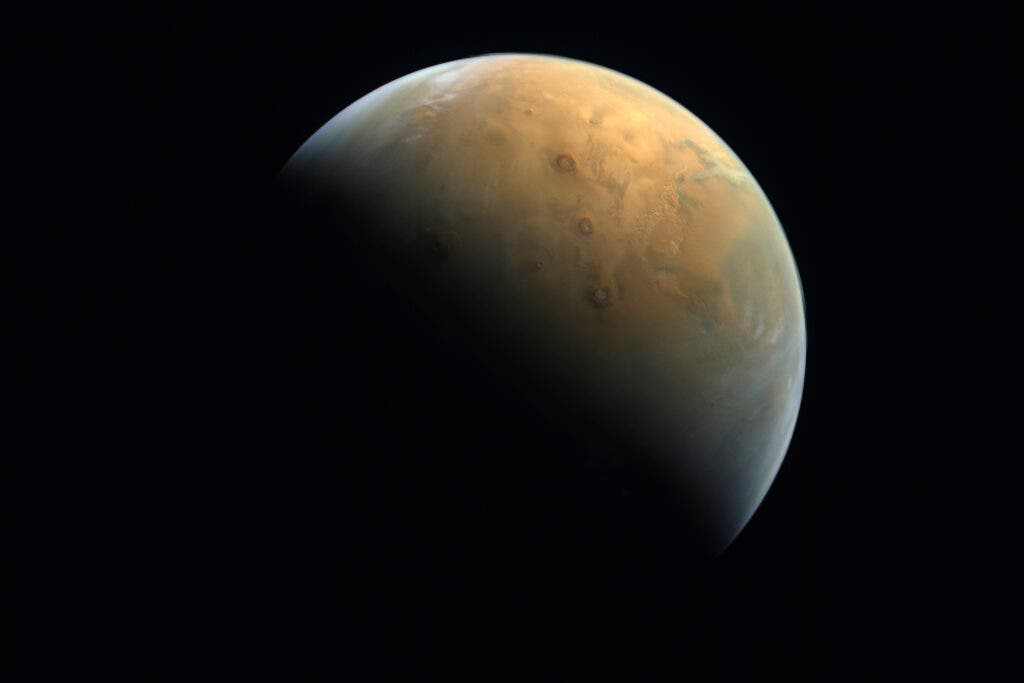
French researchers have reported they found evidence that ancient Mars may have had the right conditions to support an underground world brimming with microscopic organisms, although with an important caveat.
What they also found was that if these simple life forms ever existed on the Red Planet, they would have drastically altered the planet’s climate, leading to a catastrophic ice age and eventually wiping themselves out.
Research paints a gloomy picture of the cosmos and its workings. Life, even simple life like microbes, “might actually commonly cause its own demise,” the study’s lead author Boris Sauterey, a postdoctoral researcher at Sorbonne University, told the AP.
The findings “are a bit gloomy, but I think they are also very stimulating,” Sauterey continued.
In the paper, published in Nature Astronomy, Sauterey and his colleagues used climate and terrain models to assess the habitability of the Martian crust some four billion years ago, when Mars was thought to be flush with water and much more hospitable than today.
They reasoned that the several inches of dirt would have been more than enough to shield the hydrogen-eating, methane-producing microbes from the intense radiation at the time. According to Sauterey, just like in prehistoric times on Earth, these organisms could have thrived anywhere on Mars that lacked an insulating layer of ice.
Hydrogen removal from early Mars’ thin, carbon dioxide-rich atmosphere would have threatened the planet’s presumably humid, warm climate. Nearly a 400-degree Fahrenheit (200-degree Celsius) temperature drop would have forced any surface-dwelling organisms to burrow deeper underground if they wanted to survive.
Here on Earth, however, where nitrogen is the most abundant gas in the atmosphere, microbes may have played a role in keeping temperatures moderate, therefore leading to the environment we enjoy today.
According to Kaveh Pahlevan of the SETI Institute, the French findings should be incorporated into future climate models of Mars.
Pahlevan led a separate Cornell University study published just recently that hints at the possibility that warm oceans existed on Mars from its earliest days. Their analysis suggested that the atmosphere would have been thick and mostly hydrogen at the time, acting as a greenhouse gas that trapped heat before being carried to higher altitudes and eventually lost to space.
Pahlevan argues that the new study is inapplicable to the early times of Mars because it focused on the climate effects of hypothetical microbes when Mars’ atmosphere was dominated by carbon dioxide.
“What their study makes clear, however, is that if (this) life were present on Mars (during this earlier period), they would have had a major influence on the prevailing climate,” Pahlevan told the AP.
The French researchers say the best places on Mars to find evidence of this previous existence lie in the uncharted Hellas Planita plain and Jezero Crater on Isidis Planita’s northwest edge, where the NASA Perseverance rover is currently collecting rocks to bring back to Earth in the next decade.









